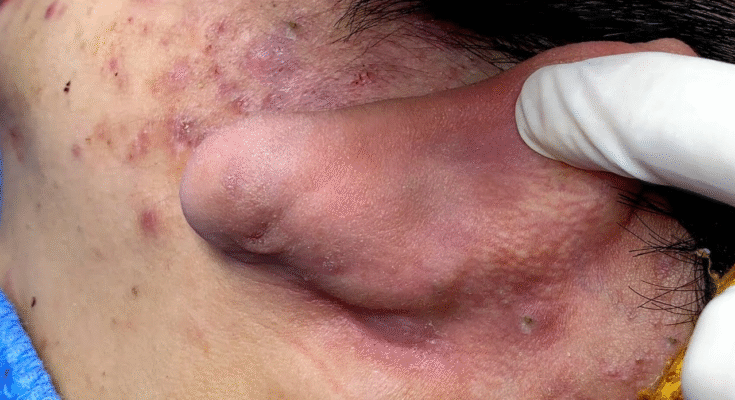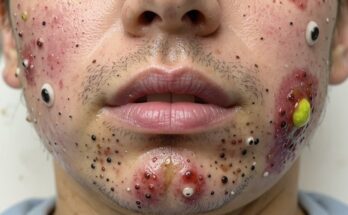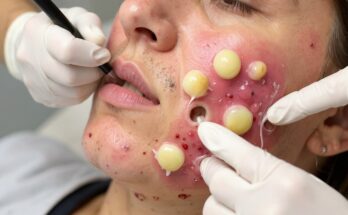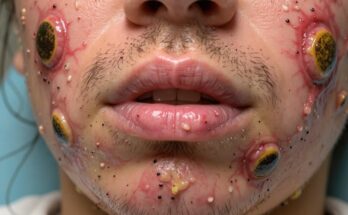Almost everyone who deals with acne has faced the moment when a pimple appears at the worst possible time—before school, work, a date, or a special event. The immediate reaction is often to squeeze it, hoping the blemish will disappear instantly. But popping pimples is one of the quickest ways to cause more irritation, infections, dark marks, and even long-term scarring.
The good news is that there are many safe, dermatologist-approved alternatives to popping your pimples. These methods help reduce inflammation, speed up healing, and prevent further damage—all without squeezing or picking your skin.
Below are effective, gentle, and science-backed solutions to manage pimples safely and responsibly.
1. Use Warm Compresses to Soften the Skin
A warm compress is one of the safest ways to reduce the size of a pimple without touching it. Heat helps soften the skin’s surface, increases blood flow, and encourages the pore to open naturally. This allows the pimple to come to a head on its own—no force required.
How to do it:
-
Soak a clean cloth in warm (not hot) water.
-
Hold it gently over the pimple for 5–10 minutes.
-
Repeat 2–3 times a day.
Warm compresses can help relieve pain, reduce swelling, and speed up natural drainage.
2. Try Hydrocolloid Pimple Patches
Hydrocolloid patches have become extremely popular because they work quickly and prevent picking. These small, sticky patches absorb pus, oil, and fluid from inside the pimple. They also shield the area from bacteria and stop you from touching or scratching it.
Benefits:
-
Dries out pimples overnight
-
Protects open or irritated skin
-
Reduces redness
-
Prevents scarring
-
Stops you from popping
For best results, apply the patch before bed and leave it on for several hours or overnight.
3. Apply Salicylic Acid to Clear Pores
Salicylic acid is a gentle exfoliating ingredient that works deep inside pores. It helps loosen and dissolve the buildup of oil and dead skin cells—the main causes of pimples. Instead of popping, salicylic acid encourages the pore to unclog naturally.
How to use it:
Apply a 0.5%–2% salicylic acid toner, cleanser, or spot treatment daily.
This reduces the size of pimples while preventing new ones from forming.
4. Use Benzoyl Peroxide to Kill Bacteria
If a pimple looks red, swollen, or painful, bacteria may be involved. Benzoyl peroxide is one of the most effective ingredients for killing acne-causing bacteria (C. acnes). It’s a strong alternative to popping because it tackles the root cause of pus and inflammation.
Tips for safe use:
-
Choose 2.5% or 5% formulas to reduce irritation
-
Apply once daily as a spot treatment
-
Always follow with moisturizer
Benzoyl peroxide shrinks pimples faster and decreases the risk of them turning into larger cysts.
5. Try a Sulfur-Based Spot Treatment
Sulfur is an underrated acne treatment that absorbs oil and dries out pimples gently. It’s especially helpful for whiteheads and surface-level breakouts.
Why it works well:
-
Antibacterial
-
Helps reduce excess oil
-
Calms redness
-
Less irritating than other treatments
Sulfur-based masks or spot treatments are excellent for soothing inflamed pimples without causing damage.
6. Use Ice to Reduce Swelling and Redness
If you have a large, painful pimple, icing it is a fast way to reduce swelling. It won’t remove the pimple, but it will make it less noticeable and much less painful.
How to do it:
-
Wrap an ice cube in a clean cloth
-
Apply for 1–2 minutes
-
Repeat 2–3 times per day
Icing is especially useful before makeup application or an important event.
7. Use Clay Masks to Remove Excess Oil
Clay masks—especially those containing kaolin or bentonite—are excellent for oily and acne-prone skin. They pull out impurities, absorb excess sebum, and help minimize pimples before they become inflamed.
Using a clay mask 1–2 times a week can reduce the severity and frequency of breakouts, eliminating the urge to pop.
8. Try Gentle Retinoids for Prevention
Retinoids are powerful vitamin A derivatives that help prevent clogged pores and speed cell turnover. They don’t shrink pimples overnight, but they greatly reduce the number of pimples that form in the first place.
Benefits of retinoids:
-
Prevent clogged pores
-
Fade dark marks
-
Improve skin texture
-
Reduce future breakouts
If you find yourself popping pimples often, retinoids can help reduce the number of breakouts you deal with.
9. Use Tea Tree Oil for Natural Healing
Tea tree oil is a natural antibacterial ingredient that helps calm inflammation and reduce bacterial growth. It’s a good option if you prefer natural remedies over strong chemicals.
How to use it:
-
Buy a pre-diluted product OR
-
Dilute a few drops in a carrier oil (never apply pure tea tree oil)
Tea tree oil can help reduce the size and redness of pimples within a few days.
10. Get Professional Extractions Instead of DIY Popping
If a pimple truly needs to be extracted, the safest option is to let a dermatologist or licensed esthetician do it. Professionals use sterilized tools and follow proper techniques that avoid scarring and infection.
Professional extractions are safer because:
-
They minimize damage
-
They reduce inflammation
-
They prevent bacteria spread
-
They help pimples heal faster
-
They avoid permanent scarring
This is especially helpful for stubborn blackheads, whiteheads, or recurring pimples.
Final Thoughts
Popping pimples may feel like a quick solution, but it often creates long-term problems—scarring, infections, and bigger breakouts. Thankfully, there are many effective and safe alternatives that don’t involve squeezing or damaging your skin.
Warm compresses, hydrocolloid patches, salicylic acid, benzoyl peroxide, sulfur, clay masks, retinoids, tea tree oil, and professional treatments all help reduce inflammation and encourage natural healing.
By choosing these alternatives, you protect your skin, prevent scars, and enjoy clearer, healthier skin over time.



